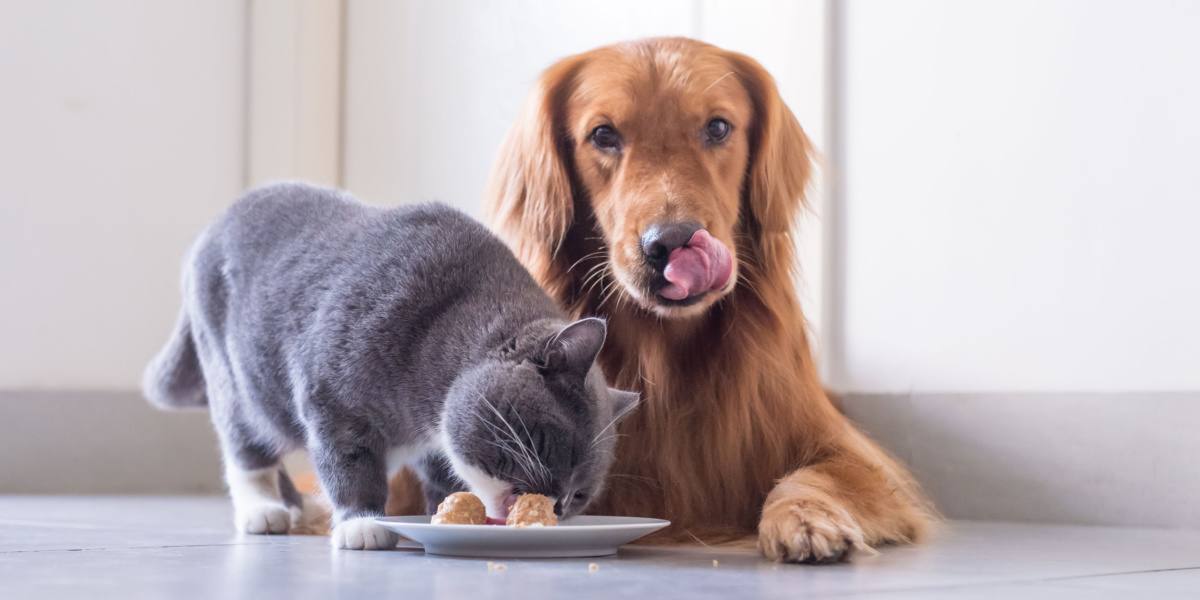Pet owners who share their homes with both cats and dogs know that it can sometimes be a challenge to manage their feeding routines. If your dog keeps eating your cat’s food, you may be wondering how to put a stop to this behavior. Luckily, we have some practical solutions to help you keep your pooch focused on their own food. Here are ten tips to keep your dog away from the cat’s food.
Can Dogs Eat Cat Food?
First and foremost, it’s important to understand that cats and dogs have different nutritional needs. Cat food is specifically formulated for obligate carnivores, with high levels of protein and minimal carbohydrates. Dogs, on the other hand, have different dietary requirements. Feeding your dog cat food on occasion may not cause any major issues, but in the long run, it can lead to health problems such as nutritional deficiencies and weight gain. Therefore, it’s best to ensure that your dog sticks to their own food.
1. Strict Mealtimes
One effective way to prevent your dog from eating the cat’s food is to establish specific mealtimes for both pets. During the cat’s feeding session, you can either take the dog out of the room or supervise closely to ensure that each animal consumes their own food without interruptions.
2. Synchronize Hunger
If your dog is motivated by hunger to steal the cat’s food, try feeding your dog and cat at the same time or give your dog their meal just before offering food to your cat. By doing so, your dog will have a satisfied appetite when the cat’s food becomes available and will be less likely to be tempted by it.
3. Install a Cat Door
Create a separate space for the cat’s food that is inaccessible to your dog. A cat door can be installed in a designated area where your cat can freely access their food, while it remains out of reach for the dog. Consider using a microchip-activated cat flap to ensure that only your cat can enter the designated area.
4. Use a Dog-Proof Gate
Another option is to set up a dog-proof gate that allows the cat to pass through but restricts access for the dog. This way, your cat can graze on their food without any interference, especially if you have a small cat and a larger dog.
5. Utilize a Door Strap
In place of a gate, you can use a door strap to secure a door partially open, allowing the cat to slip through while preventing the dog from reaching the food. This method is particularly effective for large dogs and smaller cats who can squeeze through narrow gaps.
6. Elevate the Food Bowl
If you have a small dog that can’t reach high surfaces, consider placing the cat’s food bowl in an elevated location such as a cat tree or kitchen countertop. Cats are natural climbers and jumpers, so they will have no trouble accessing their food, while the dog will be unable to reach it.
7. Set Up a Cat Feeding Station
If separation is not an option, you can create a feeding station specifically designed for cats. There are different types of cat feeders available, including ones with timer functions or microchip sensors that dispense food only when the correct cat’s microchip is detected. This allows your cat to eat their meals undisturbed, even in a multi-pet household.
8. Try a Puzzle Feeder
Puzzle feeders provide mental and physical stimulation for cats while making it difficult for dogs to access their food. These interactive feeders mimic a cat’s natural hunting behavior and can help reduce obesity and boredom in cats. Additionally, they deter dogs from stealing the cat’s food.
9. Use a Protective Cat Bowl
Certain cat food bowls are specifically designed to keep dogs away. These bowls often have small openings that only allow cats to access the food, or they come with covers to prevent dogs from reaching the contents. While some cats may be hesitant to use these bowls due to their whiskers touching the edges, many cats adapt well to them.
10. Provide Enrichment
Sometimes, dogs may attempt to eat the cat’s food out of boredom. To alleviate this, offer your dog plenty of enrichment, such as chews, toys, and interactive games. Keeping your dog mentally and physically stimulated will help prevent them from seeking out the cat’s food. Additionally, consider using positive reinforcement training to teach your dog the “leave” command when it comes to the cat’s food.
Frequently Asked Questions
Q: Can dogs eat cat food occasionally?
A: While feeding your dog cat food on occasion may not cause immediate harm, it’s best to stick to their own food to ensure they receive the proper nutrition.
Q: Will feeding my cat and dog at the same time help prevent the dog from eating the cat’s food?
A: Synchronizing meal times can be helpful as it reduces the dog’s motivation to steal the cat’s food when they have already eaten.
Q: Are there specialized cat food bowls to keep dogs away?
A: Yes, there are cat food bowls designed to prevent dogs from accessing the food. These bowls have small openings or covers that deter dogs from eating from them.
Conclusion
It’s essential to ensure that cats and dogs are provided with the appropriate diets tailored to their individual needs. By implementing these tips, you can successfully prevent your dog from eating the cat’s food. Remember to find the method that works best for you and your pets, and don’t hesitate to combine different techniques. Good luck!
